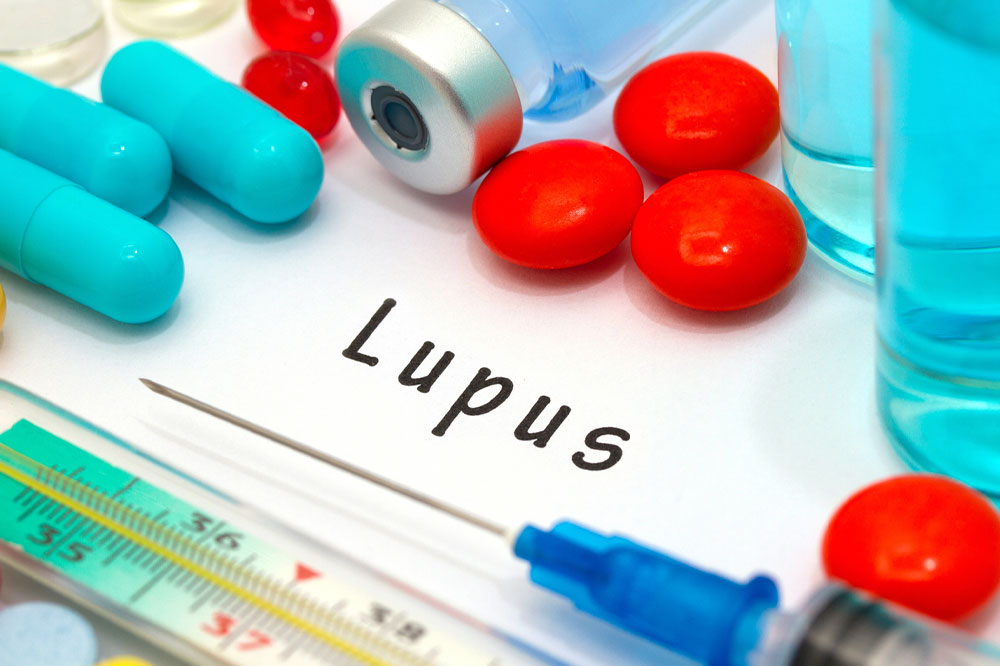Lupus – Types and Warning Signs

The immune system is responsible for protecting the body against infection and diseases. Sometimes, this system malfunctions and attacks healthy cells and tissues, causing diseases in one or many body parts. Such diseases are called autoimmune diseases. Lupus is an example of an autoimmune disease that can affect people of all ages, with women at a higher risk than men. This post closely examines what lupus is, its types, and its symptoms.
What is lupus?
Lupus is a chronic autoimmune disease where a person’s immune system mistakes healthy cells for invaders. It then creates antibodies to attack the healthy cells and tissues, causing inflammation and pain in different body parts, including the skin, joints, muscles, and internal organs. Lupus can be mild to severe and, in some cases, life-threatening.
Patients with lupus may see phases when they are very ill and phases where they feel better. The symptoms can be managed with treatment, and patients diagnosed with the disease can lead a full life.
Different types of lupus
The signs and remedies may vary from one person to another based on the type of lupus that affects them. The following are a few common types one should know:
Systemic lupus erythematosus (SLE)
SLE is the most severe and most common form of lupus. It can affect a person’s health in many ways. For instance, SLE can cause inflammation of the kidney that damages the organ; inflammation in the nervous system and brain that causes headaches, strokes, memory problems, and confusion; inflammation in the blood vessels of the brain that leads to seizures, changes in behavior, and high fever, coronary artery disease that could increase the risk of a heart attack; and pulmonary hypertension.
SLE is difficult to diagnose as its symptoms mimic those of other benign diseases. Doctors use a combination of diagnostic tools, such as a physical examination, blood and urine examinations, and imaging tests, to rule out other ailments and identify SLE. If a person complains of kidney or skin issues, doctors may also perform a kidney and skin tissue biopsy to ascertain the cause.
Cutaneous lupus erythematosus (CLE)
This type of lupus affects the skin, causing lesions and sores. The lesions are red, scaly, and raised and shaped like discs. Some may develop rashes on their cheeks, nose, face, scalp, mouth, nose, private parts, and areas exposed to sunlight. People with cutaneous lupus may go on to develop SLE.
Neonatal lupus (NL)
It is a rare type that affects infants if the mother has lupus. The child may have liver problems, rashes, or low blood cell counts at birth. All the symptoms disappear within a few months after birth, and the child usually lives a healthy and normal life. Doctors can now diagnose neonatal lupus and treat the child before or after delivery with proper screening and testing.
Treatment -induced lupus erythematosus
Some treatments may cause lupus with symptoms similar to SLE. The signs and impact of this condition usually disappear once doctors discontinue the treatment.
Early signs and symptoms of lupus
The condition’s manifestation varies from person to person. While some may experience a single symptom like a rash, others may develop multiple discomforts like rash, hair loss, and chest pain. The frequency of symptoms also differs from one person to another. Sometimes, the signs appear and disappear in phases, with episodes of flare-ups and periods of remission. The most commonly occurring early signs and symptoms of lupus include:
Off and on low-grade fever
Fever with temperatures between 36.9 degrees F and 38.3 degrees F that keep reoccurring without an apparent cause is one of the early symptoms of the disease. Since the fever is not very high and does not impact the patient in any way, many ignore it. This is a mistake, as recurrent low-grade fever can result from infection or inflammation associated with lupus.
Joint and muscle pain
Inflammation in the muscles and joints can cause stiffness and pain. The condition can affect any joint, especially the upper arms, neck, thigh, and shoulder. This symptom can prevent one from performing physical activities and exercise.
Skin rashes and lesions
Butterfly-shaped rashes on the cheeks and nose are a typical symptom. These rashes can also be round or disk-shaped and scaly. Sometimes, red-colored rings outline them. Rashes are more common in body areas exposed to sunlight.
Chest pain
If lupus affects the lungs, the organ’s lining may get inflamed, causing severe stab-like pain in some parts of the chest. This pain may increase when the patient sneezes, coughs, laughs, or takes a deep breath. Chest pain and shortness of breath are early warning signs of the condition.
Photosensitivity
Two in three people with lupus are photosensitive; they react strongly to sunlight and other bright artificial lights. Photosensitivity can exacerbate other symptoms like rashes, joint pain, and inflammation in the affected organs.
Mouth ulcers and sores
Red ulcers with a white halo on the roof of the mouth, cheeks, and lips should not be ignored. If a person has recurrent mouth ulcers that may or may not be painful, they should consult a doctor for a thorough examination and diagnosis.
Anemia
When a person has a chronic disease, inflammation may prevent the body from making adequate red blood cells (RBCs). It is called anemia of chronic disease. Anemia is a symptom of lupus that can manifest during flare-ups.
Persistent and unexplained fatigue
Eight out of ten people with SLE experience fatigue, which can be severe, making it difficult to complete basic tasks. It can be caused by anemia or without any apparent reason. Moreover, fatigue may not improve with adequate rest and sleep.
Hair loss
Lesions, rashes, and scars on the scalp can lead to hair thinning and consequent hair loss. Doctors can manage this symptom with treatment.







